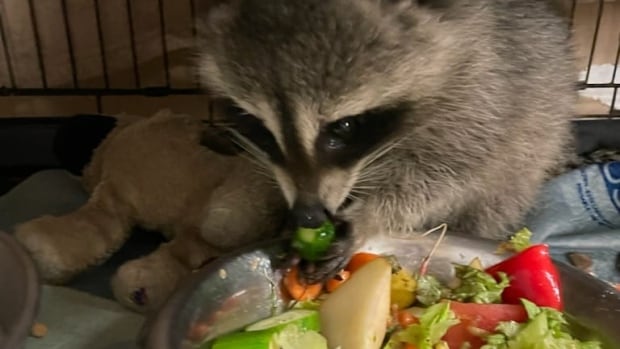How do you nurse a baby bat with a “tiny, itty bitty, teeny weeny little mouth?”
That’s a question Cara Contardi had to answer last year when her team started caring for four bats from Oakville, Ont.
“What kind of feeding implement can I use?” She remembers wondering.
Contardi, the director of Urban Wildlife Care in the Niagara Region, had seen someone nurse bats with a tiny sponge, so she went to Shoppers Drug Mart, where she purchased an eye-makeup applicator. She cut that in half and soaked it in formula, then gave it to the baby bat so suck on.
“It worked like magic,” she said, and the bats “grew up to be big and beautiful,” Contardi told CBC Hamilton.
“That’s wildlife rehabilitation.”
Contardi’s centre in Grimsby, Ont., has operated since the late 1990s. It’s one of about 70 authorized wildlife rehabilitators in the province — sites that provide crucial care to undomesticated animals, despite the rising costs to run such a service.
WATCH | Cara Contardi shares how she learned to nurse baby bats
Grimsby, Ont., wildlife rehabilitator Cara Contardi shares how she learned to nurse four baby bats she helped rescue last year. Contardi directs Urban Wildlife Care.
Wildlife rehabilitators care for sick, injured, immature animals
On its website, the Ministry of Natural Resources describes rehabilitation as the process of “providing temporary care to wildlife that is injured, sick or immature to help them successfully return to the wild.”
Only authorized custodians are legally able to provide this care.
At the centre, Contardi describes herself as being responsible for “all the fur.” She helps rescue, treat and release animals including squirrels, raccoons, foxes and bats from the Niagara, Hamilton and Halton Region.
The work is funded by donations and government grants, Contardi said. She works in a local animal hospital where she’s connected with veterinarians who help out at the wildlife centre when they can. The centre also employs students through grants.

Growing up, Contardi said, she was always bringing home injured animals to her family’s home in Hamilton. But when she got older, she started working in fashion and opened a store where she made and sold dresses.
In the late ’90s, Contardi said, she found an injured bird and took it to a wildlife rehabilitator who inspired her to change fields.
Now, she said, “I can make you a dress or a suit — and nurse a raccoon.”
It’s been a demanding business, Contardi said, with long hours and little time off, but it’s also been rewarding.
“If I wasn’t here, they’d be dead,” she said of the animals she looks after.
Single tub of baby squirrel formula costs $300
Contardi said that the number of rehabilitators has declined in her lifetime, a drop she attributes to the high costs of managing a centre and purchasing supplies.
For example, Contardi said, one tub of formula for baby squirrels costs about $300, and the centre goes through one a week during breeding season.
While there are around 70 rehabilitators in Ontario, Mike Fenn, a spokesperson with the Ministry of Natural Resources said in an email there used to be around 100.
“Declines could be attributed to many factors including rising rehabilitation operating costs and the high time commitment.”
He said that while rehabilitators typically raise funds and take donations, the ministry “remains committed” to supporting them, in part by regulating the profession, sharing health and research information, and providing the public with information about how to become a rehabilitator.
A key part of rehabilitation is working with local government, wildlife removal companies and members of the public, Contardi said.
In her experience, people don’t often know wildlife rehabilitators exist until they find an unattended baby raccoon, or injured opossum.
“There’s such a huge disconnect when it comes to wildlife still in a lot of people,” she said. “I don’t think they realize that the family of skunks underneath their deck really does deserve their respect. People just look at them as vermin and it’s easy for them to trap them and do horrible things.”
“When we post videos like [a baby skunk nursing], we’re just trying to get people to connect and realize that a baby is a baby is a baby, right? A living thing is a living thing and deserves your respect and deserves your compassion.”
Contardi said she also hopes people will financially support centres like hers so they can carry on and that young people will be inspired to work in the field when people like her retire.
And, at the end of the day, Contardi said, the best part of the job is releasing animals back into the wild.
She said foxes will “smoke” out of the carriers they’re released from but always stop and look back, almost as if to thank the rehabilitators for the help.
“That’s why you do it.”


